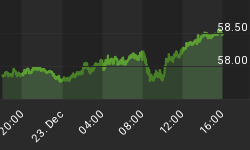Over the past several months I have debated from which low of the 2011 Sideways Movement to count the current basic advance; 10/4/11, 11/25/11, or 12/19/11.
The first two lows were forecast by Middle Sections telling us that they are significant and should play a role in our forecasts. However, there is no Middle Section forecast to the low on 12/19/11 thus removing it from consideration as the origin of a basic advance.
The Dow is past the point where all possible standard time spans from 10/4/11 have expired. As for 11/25/11, all possible standard time spans from this low have expired except one; an extended basic advance (929-968 days). It forecasts a high in the time period from June 11 to July 20. July 20 is this Sunday which means if the 2009 bull market topwasn't already seen on 7/3/14 then it should be expected this week.

















